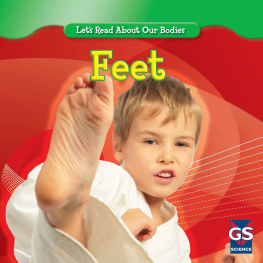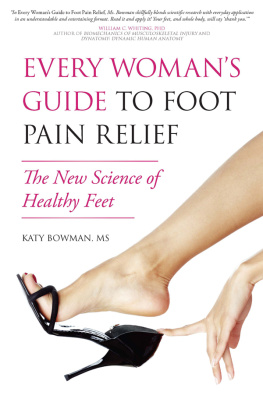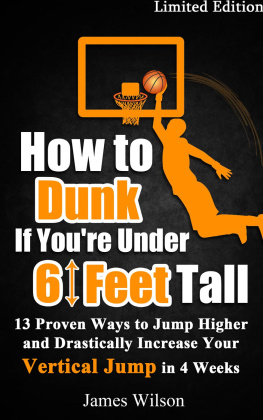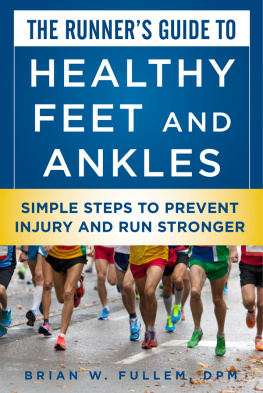To my family: You are my inspiration. I love you all very much (to the moon and dinosaurs).
THE FOOT STRENGTH PLAN
Copyright 2020 Colin Dombroski
All rights reserved.
Unless otherwise specified all images One12 Photography (www.one12photo.ca ).
ISBN (paperback): 978-1-7772376-1-5
ISBN (ebook): 978-1-7772376-0-8
Cover design by Aaniyah Ahmed
Interior design and production by Domini Dragoone
Photography by One12 Photography
Chapter opening images sourced from 123rf.com
DISCLAIMER
This book is intended to supply general educational information only. This book is not intended to be used as a substitute for professional medical advice. Each patient is unique, and solutions and their results vary. Users should execute the exercises in this book with professional advice from a qualified physician or foot specialist.
Any mention of specific companies, organizations, or authorities in this book does not imply endorsement by the author or publisher, nor does the mention of specific companies, organizations, or authorities imply that those entities endorse this book, its author, or the publisher.
Any third-party sites linked to this book are not under the authors control. The author is not responsible for anything on the linked sites, includingwithout limitationany content, links to other sites, any changes to those sites, or any policies concerning those sites. The author provides links as a convenience only, and such links do not imply endorsement by the author or publisher, nor does mention of specific companies, organizations, or authorities imply that those entities endorse this book, its author, or the publisher.
For bonuses, videos of exercises, a list of references, and more, visit www.stuffaboutfeet.com
Contents
Introduction
Strong, healthy feet. Thats the dream, and with the help of this book, your reality! Theres some real homework ahead, but if youre up for the challenge, youll be rewarded with better balance, a stronger grip on the ground, and a rock-solid foundation for walking, running, or whatever you re into.
As a Canadian Certified Pedorthist with a PhD in Health and Rehabilitation Science, a background in sports medicine and orthopedics, and eighteen years experience helping tens of thousands of patients find their best footing to aid in injury recovery and prevention, I can tell you that one of the keys to lasting recovery and prevention of future injury is to get strong. How, you ask? The answers to this question are complicated in some ways, and yet devilishly simple in others.
Don t worry! Im here to help you navigate through our step-by-step approach and have some fun along the way.
chapter one
Why strengthen your feet?
Reducing your risk of injury is the best reason to follow the advice on the coming pages. Its important to remember that while most injuries have just a few causes, they have a lot of solutions. Unfortunately, theres a tendency to think that the latest fad in footwear (either minimalist or maximalist) is the solution to every injury risk factor. Take barefoot running, for instance. Is going barefoot the best option? Should we run like our ancestors did? Its just not that simple. For some of us, getting out for a walk around the block is a major achievement. Some can go from couch to marathon barefoot with no problems, while for others trying to train barefoot is downright dangerous. The real question is, what is the best solution for YOU ? Do you have a history of not getting injured that often? If so, you might be able to do more than the average person. Or, are you someone who suffers from osteoarthritis and has a hard time being active? If so, the approach you need to take may be completely different from the next person / your friend / Usain Bolt.
How can you train effectively, keep practicing your favorite sport, and avoid injury? How do you make sense of all the conflicting information? Most importantly, how do you keep your feet and your body operating at their peak, with full mobility? (As Ill explain later in this book, theres an important difference between just being flexible and being truly mobile.) Why can some people go from sitting on the couch to running a half-marathon with no pain, despite doing it all wrong (at least according to conventional wisdom). Others follow the best advice from world experts and still get injured.
We all have an innate desire for one-phrase answers, simple solutions to complex questions. Spoiler alert: Im a foot specialist with a PhD, and I still dont know all the answers. Neither do the many experts, but I can tell you what I do know. The barefoot people will tell you going barefoot is best, while the foot specialists and doctors will have a variety of opinions, and people in shoe stores will pitch in with their advice. What is right for a 34-year-old post-partum mom with recent foot changes, a 60-year-old man with knee osteoarthritis who wants to run, and a 22-year-old uninjured college student will be vastly different.
Injury Answers
Lets start with the complicated question of why humans experience injuries differently. Why do some people never seem to get hurt or have only fast-healing minor injuries, while others do similar activities and always get injured? Arent we all humans who can reach beyond our natural potential and be the machines we were destined to be? Id argue that such a fate isnt for everyone. The history of foot injury gives us some clues.
Back in the 1950s, the popular theory was that your foot functioned best when it was in its most neutral position. Youve probably already heard this, because all kinds of foot orthotics, athletic shoes, and exercise forums have been touting the word neutral for decades. It was a convenient theory, because its both simple to understand and to explain. Trainers, podiatrists, shoe salespeople, and everyone else would say, See your low arch? Thats the reason you have this injury. Lets fix that. As practitioners, we hung our hat on it.
The problem? While it was a convenient theory, it had never been empirically validated. We just grabbed it and went with it, as it was the best information we had at the time. Fast forward to the 1990s, when we learned that the neutral theory didnt really work the way we assumed. Oops.
To understand whats wrong with the neutral theory, take a look at the pictures below.
This is the type of thing I see every day. The person in Image 1 (Image 1) is what wed call a classic over-pronator. Why would that person need orthotics? Just look at that arch! Of course it needs help! (So said every orthotic salesperson, ever.) But in fact, this person is an Ironman triathlete with little to no injury history.
Now look at the next picture (Image 2) . Heres the classic neutral foot. Look at the beautiful arch. Not too high, not too lowthe pinnacle of the normal distribution of feet. But this person is a patient who, despite our multidisciplinary teams best efforts, cant run a 5K without experiencing severe symptoms of plantar fasciitis.











